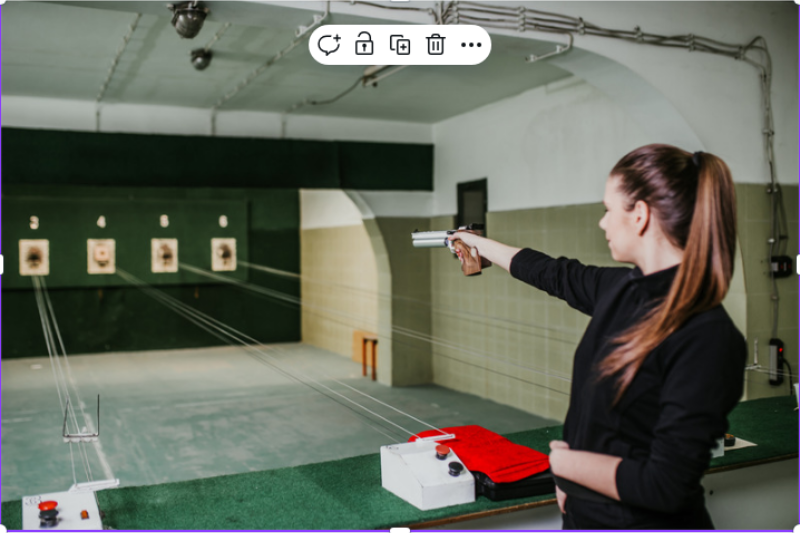“One in five college women experience some form of assault during their academic career.” That’s not a scare tactic—it’s a reality. Whether you’re a student walking across campus after a late class, a new grad navigating a city commute, or a young professional heading home after work, personal safety is becoming an essential life skill.
Across the U.S., young adults are becoming more aware—and more vocal—about their safety concerns. Newsfeeds are filled with stories of rideshare mishaps, apartment break-ins, and street harassment. Apps like Citizen and Nextdoor send real-time crime alerts that make you think twice before going for a solo jog or answering a knock at your door after dark.
Independence is exciting—but it also means you’re your own first line of defense. Parents aren’t around. Campus security can only do so much. And in many situations, seconds matter more than help that’s minutes away.
That’s where self-defense tools come in. For many young adults, investing in personal safety is just as important as learning how to manage your budget or do your own laundry. But here’s the catch: with so many options out there—stun guns, pepper spray, personal alarms—how do you know what’s right for you?
Spotlight on Stun Guns
A stun gun is a non-lethal self-defense device designed to stop an attacker by delivering a high-voltage, low-amperage electric shock. When pressed against the body, the electric current causes intense pain, muscle contractions, and temporary loss of balance—buying you precious seconds to escape.
Unlike tasers (which shoot projectiles from a distance), stun guns require direct contact with the assailant’s body. Most models don’t cause long-term damage but are effective at pain compliance—forcing someone to disengage without escalating to deadly force.
Pros of Carrying a Stun Gun
- Immediate Incapacitation: A direct hit can instantly immobilize an attacker by disrupting their muscle control.
- Visual Deterrent: The visible arc and crackling sound often scare off would-be attackers before they get close.
- Rechargeable and Compact: Most stun guns today are palm-sized, USB-rechargeable, and easily clipped to a keychain or bag strap. No need to worry about replacing batteries or carrying extra parts.
Cons to Consider
- Close-Contact Only: You must be within arm’s reach to use it effectively. That can be a deal-breaker for someone not comfortable with physical confrontation.
- Practice Required: Like any self-defense tool, confidence comes with repetition. You need to practice drawing it, turning it on under pressure, and knowing where to aim.
- Legal Restrictions: Stun guns are legal in most of California—but with caveats. You must be at least 16 years old with parental or guardian consent, and local restrictions may still apply (such as on school grounds or government buildings).
Who Is It Best For?
- Individuals confident in close-contact defense or who have taken a self-defense course.
- Young adults living or commuting in urban areas, where visible deterrence and rapid response matter.
- Those looking for something stronger than pepper spray, but who aren’t comfortable carrying something more aggressive like a firearm.
Pepper Spray: A Popular Alternative
Pepper spray is one of the most widely recognized self-defense tools—and for good reason. It’s made from oleoresin capsicum (OC), the active ingredient in hot peppers. When sprayed at an attacker, it causes intense burning of the eyes, nose, throat, and skin, leading to temporary blindness, difficulty breathing, and disorientation.
This powerful reaction gives you the critical time needed to get away or call for help—without requiring any physical contact.
Pros of Pepper Spray
- Longer Range: Unlike stun guns, pepper spray allows you to keep some distance—usually effective from 6 to 12 feet depending on the model.
- Temporarily Disables Attackers: The effects typically last between 15 and 45 minutes, giving you ample time to escape the situation.
- Compact and Affordable: Pepper spray fits easily in a pocket, on a keychain, or clipped inside a purse. It's also budget-friendly, making it ideal for students or anyone just starting their safety toolkit.
Cons to Consider
- Weather Conditions Matter: Wind can blow the spray back into your own face if you’re not careful, especially in outdoor settings.
- Requires Accuracy Under Stress: You’ll need to aim for the eyes and face—no small feat when adrenaline is pumping and your hands are shaking.
- Legal Restrictions Still Apply: In California, pepper spray is legal for self-defense, but some college campuses, government buildings, and airports restrict possession or use. Always check your school's or employer’s policy.
Who Is It Best For?
- Students walking home from class, riding public transit, or working late-night shifts
- Young adults who prefer distance-based defense tools
- Individuals who feel uneasy with close-contact options like stun guns or weaponless defense
Personal Safety Alarms: Simple but Effective
Personal safety alarms are small, portable devices that emit a piercing noise—often up to 130 decibels—when activated. That’s as loud as a jet engine at takeoff. The goal isn’t to disable an attacker but to draw immediate attention, scare off threats, and alert nearby people that you need help.
They’re typically activated with a quick pull of a pin or press of a button, making them ideal for high-stress situations where fine motor skills might fail.
Pros of Personal Safety Alarms
- Non-Violent & Legal Everywhere: No sprays, no weapons, and no legal red tape. Alarms are safe for minors and can be carried in schools, airports, and public buildings.
- Perfect for Campus & Public Transportation: If you’re walking across a dark parking lot or waiting for a late-night bus, having a loud, attention-grabbing alarm can deter threats before they escalate.
- User-Friendly: No aiming, no charging, and no physical contact required. Alarms are intuitive, stress-proof, and easy to use even if you’ve never held one before.
Cons to Consider
- Doesn’t Physically Stop an Attacker: The alarm won’t disable or slow down an assailant. It buys you time—but only if there’s someone nearby to help or the attacker is scared off by the sound.
- Relies on Bystander Response: In isolated situations, like empty streets or stairwells, the alarm may not be enough on its own.
Who Is It Best For?
- Teens, college students, and first-time safety tool users
- Anyone who feels uneasy using pepper spray or stun guns
- Individuals who want to add a layer of protection to their existing safety plan
Other Self-Defense Tools to Consider
Kubotans
Kubotans are small, legal keychain-style self-defense tools that pack a punch when used correctly. Made of metal or hard plastic, they can be used to strike pressure points, apply leverage, or aid in escapes from wrist grabs.
- Pros: Discreet, lightweight, and always accessible on your keys.
- Cons: Requires basic training to be used effectively. Without technique, it’s just a heavy keychain.
Best For: Individuals who want a hands-on, compact tool that’s easy to carry but are willing to learn how to use it properly.
Tactical Flashlights
These aren’t your average flashlights. Tactical models are built for self-defense, often featuring high-lumen beams (up to 1000+ lumens) and strobe settings to disorient attackers in dark environments.
- Pros: Great for nighttime commuters, joggers, and travelers. Dual-purpose tool—light your way and protect yourself.
- Cons: Not a physical defense tool on its own, but can be a strong first line of deterrence.
Best For: Anyone who spends time outdoors after dark or prefers a non-threatening but highly functional safety tool.
Mobile Safety Apps
Technology can be a powerful ally. Apps like Noonlight, SafeTrek, and bSafe offer features such as:
- Real-time location sharing
- Emergency SOS alerts to friends or 911
- Timed alerts for walking home alone
- Pros: Discreet and accessible—always with you via your phone.
- Cons: Dependent on cell service and battery life. Not a standalone defense tool.
Best For: Young adults living independently, rideshare users, or long-distance commuters who want digital backup.
Empowerment Through Preparation
When it comes to personal safety, there’s no such thing as a one-size-fits-all solution. Whether you choose a stun gun, pepper spray, personal alarm, or a combination of tools, the most important factor is how well you understand it, how confidently you can use it, and whether it’s legal for you to carry.
Real self-defense starts before an incident ever happens. It begins with awareness, preparation, and the mindset to avoid, de-escalate, or defend—only if necessary. The best tool you have isn’t in your hand—it’s in your head.
At Guardian Training Center, we don’t just sell safety tools—we teach you how to think like your own protector, act decisively under pressure, and walk through life with confidence, not fear.
Contact Us to Learn More
📍 Address: 2333 Verna Court, San Leandro, CA
📞 Phone: 510-626-4940
📧 Email: info@guardiantc.com
🌐 Website: www.guardiantc.com
📅 View Classes: See Class Schedule
📱 Follow Us for Updates & Tips:
Instagram | Facebook | LinkedIn





.svg)